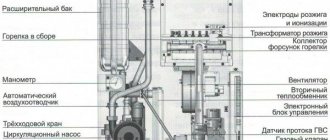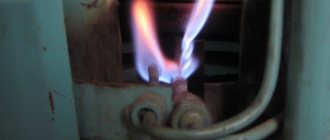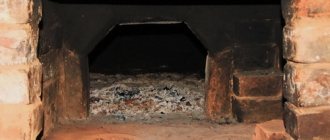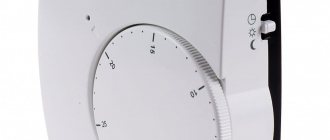Gas is still the cheapest fuel, so if you have a gas main, you should choose a gas boiler without hesitation.
According to surveys and practice, the top three most important selection criteria for most buyers include gas consumption. Despite the fact that it is indicated in the characteristics of almost every modern boiler, this does not allow you to quickly imagine the approximate cost of gas consumed per day, month or for the entire heating season. To make heating budget planning easier, it is enough to once understand the principles of calculating gas consumption by boilers.
You will be shocked! Why is gas always cheaper than electricity?
Electricity and gas in the household are used in heating appliances such as gas heating boilers and water heaters, electric boilers and boilers. Which type of energy is more profitable for heating? gas or electricity? This question is not easy to answer because electricity and gas are often used differently. Electricity is present in every home, but not all Russians are 100% supplied with gas fuel.
Accounting and control are the main things required
More than a hundred years ago, Lenin said: “Accounting and control are the main things required for the proper functioning of the first phase of communist society.” And how he looked into the water. In Russia, gas for the population is measured in cubic meters, but over the hill, just think in:
- cubic meters;
- kilowatt hours (kW*h);
- Gigacalories (Gcal);
- Megajoules (MJ).
Such complex accounting is associated with the quality of the gas mixture. It turns out that the calorific value of one cubic meter of gas from different sources can vary dramatically, down or up.
It turns out that the first phase of this very communism has already begun in the decaying West.
Tips: If you want to confuse representatives of the gas industry, tell them that there are not enough megajoules in their cubic meter of gas. And calmly watch the creak of the right and left hemispheres of the brain.
If you google this topic on the Internet, you will find exactly the opposite results on websites. Anyone who sells electric boilers and water heaters provides 100% evidence that it is economically profitable to heat houses and apartments with electricity. Dealers of gas boilers prove that heating with blue fuel is cheaper. So who's right?
The teachers wasted their time with me for nothing.
It turns out that the Ministry of Education of the Russian Federation prepared children for the harsh truths of life from the eighth grade of high school. In physics lessons, children were asked problems like: “What amount of heat will be required to heat 1 liter of water with an initial temperature of 10 °C to 100 °C?” And the approaching test was accompanied by mass illness of almost the entire class. And few of the students did not dream that the school would burn down along with the physics classroom.
In order to solve this problem, you need to know what specific heat capacity is and the formula for determining the amount of heat.
In order not to bother readers with formulas, let’s say right away that 1 m3 of high-quality gas in terms of calorific value is equal to 9.5 kWh of electricity.
And now it’s not difficult to calculate which is more profitable. The cost of one meter of cubic gas for Moscow is 4,837 rubles. The cost of one kilowatt of electricity is 5.47 rubles. Thus, if we convert kilowatts into money, we get 9.5 * 5.47 = 51.97 rubles. That is, electricity is 10.74 times more expensive compared to one cubic meter of gas. Or to heat the same amount of water, gas is needed almost 11 times less.
This is where the golden time comes for manipulating the minds of consumers. The calculations include the design and installation of a new gas pipeline, the maximum cost of gas boilers, maintenance and the risk of explosion of the gas mixture. To finally convince readers, the payback of gas or electrical equipment is calculated.
Keep in mind. The payback on heating equipment will only come when the apartment owner starts selling heat to neighbors and making a profit. And since it heats itself, there can be no payback.
Gas, of course, is an explosive substance, but electric shock is also not good for health.
If we take into account the efficiency of gas boilers of 90% and add the costs of gas and electricity, gas heating will still be cheaper than electric.
Rough calculations show that for heating 10 sq. m. The usable area requires 1 kilowatt of electricity. Apartments and houses are designed with a rated electrical load of 3 kilowatts. When a larger load is turned on, the fuses will trip and turn off electrical appliances.
Thus, in a modern apartment, even after installing an electric boiler or water heater of 10 kilowatts, it will not be possible to take more than three kilowatts from the network.
This means that no more than 30 square meters of living space can be heated with electricity to a comfortable temperature. The very installation of a new power supply line with a capacity of at least 10 kilowatts plus design and permits to heat an apartment or house with an area of 100 square meters will be very expensive.
Cook with electricity or gas?
It all depends on the dish that needs to be prepared. Cooking over an open fire has the advantage that food quickly reaches the desired temperature. This saves energy and costs. However, there are also disadvantages:
- it is difficult to adjust the required temperature;
- constant monitoring of food preparation is required.
Open flames also pose a safety risk, and cleaning soot from pots takes time and chemicals.
An electric stove or 220-volt automatic convection ovens are another matter.
Electric stoves take longer to reach the desired temperature and cool down more slowly. There is a risk of burns even after cooking. However, the smooth surface of the pans is easy to clean and even low temperatures, for example to keep food warm, can be easily set.
An induction cooker is a special type of cooker that makes up for some of the shortcomings of a conventional electric cooker. The heat is generated by an alternating magnetic field in combination with suitable cookware. The desired cooking temperatures are reached as quickly as on a gas stove. This saves energy, and an induction cooker is cheaper to operate than a regular electric cooker. In addition to the induction cooker, you will need special pots and pans because it will not work with other cookware.
Heating with gas or electricity
Gas heating systems are compact and do not require space to store fuel. They are inexpensive to purchase and effective to consume. Some devices even use exhaust gases to burn carbon monoxide and generate heat.
If a gas pipeline is connected to the house, it is clear that gaseous fuel must be used to heat the apartment. Instantaneous water heaters heat water to the required temperature in real time.
To prepare complex dishes in appliances such as program-controlled steam ovens, use electrical energy. Cheap gas combi steamers for home use with automatic temperature control have not yet been invented.
So let's summarize.
Use gas for heating, heating water, and preparing simple dishes. And to prepare complex dishes using automatic temperature maintenance devices, use electric convection ovens, combi ovens, microwave ovens, and bread makers.
Source
How to reduce energy costs?
We will proceed from the fact that, firstly, electricity consumption directly depends on the thermal power of the heating boiler. And, secondly, most of the electricity consumed is taken by the circulation pump, which circulates the coolant in the pipes so that the pipes and heating radiators warm up evenly.
The boiler usually always operates at night from 23:00 to 06:00. Use a multi-tariff electricity meter, reduced prices apply at night
Let's name a number of specific proposals for those who would still like to reduce energy costs:
Opt for a non-volatile unit. Most likely, this will be a floor-mounted option. In terms of functionality and comfort, alas, it is not able to compete with its energy-dependent analogue models. Buy a volatile device, but of low power. Here, of course, there is a significant limitation - one cannot ignore the number of heated square meters. If, for example, you need to heat 180-200 m² of a private house, then a gas boiler with a capacity of 20-24 kW is needed. And no less. Carefully study the product lines of different brands. Each model has its own nuances and, perhaps, for some of them you will see the most attractive power consumption figures in the technical specifications. Analyze what makes up the total cost of paying for electricity
Perhaps the share of these costs attributable to a gas boiler is negligible, and attention needs to be switched to other objects that really consume electricity excessively. How do you like using alternative energy - say, solar panels or collectors on the roof of a house?
And yet, in pursuit of saving electricity, do not bring your own actions to the point of absurdity. Do not forget that gas units consume little electricity, since their main fuel resource is not electricity, but natural or liquefied gas.
Calculation method for natural gas
The approximate gas consumption for heating is calculated based on half the power of the installed boiler. The thing is that when determining the power of a gas boiler, the lowest temperature is set. This is understandable - even when it is very cold outside, the house should be warm.
You can calculate gas consumption for heating yourself
But calculating gas consumption for heating using this maximum figure is completely incorrect - after all, the temperature is generally much higher, which means much less fuel is burned. That’s why it is generally accepted that the average fuel consumption for heating is about 50% of the heat loss or boiler power.
We calculate gas consumption by heat loss
If you don’t have a boiler yet, and you estimate the cost of heating in different ways, you can calculate it from the total heat loss of the building. They are most likely known to you. The technique here is this: they take 50% of the total heat loss, add 10% to provide hot water supply and 10% to remove heat during ventilation. As a result, we obtain the average consumption in kilowatts per hour.
Next, you can find out the fuel consumption per day (multiply by 24 hours), per month (by 30 days), and, if desired, for the entire heating season (multiply by the number of months during which the heating operates). All these figures can be converted into cubic meters (knowing the specific heat of combustion of gas), and then multiply the cubic meters by the price of gas and, thus, find out the heating costs.
| Crowd name | Unit | Specific heat of combustion in kcal | Specific heat of combustion in kW | Specific heat of combustion in MJ |
| Natural gas | 1 m 3 | 8000 kcal | 9.2 kW | 33.5 MJ |
| Liquefied gas | 1 kg | 10800 kcal | 12.5 kW | 45.2 MJ |
| Coal (W=10%) | 1 kg | 6450 kcal | 7.5 kW | 27 MJ |
| Wood pellets | 1 kg | 4100 kcal | 4.7 kW | 17.17 MJ |
| Dried wood (W=20%) | 1 kg | 3400 kcal | 3.9 kW | 14.24 MJ |
Example of heat loss calculation
Let the heat loss of the house be 16 kW/hour. Let's start counting:
- average heat demand per hour - 8 kW/h + 1.6 kW/h + 1.6 kW/h = 11.2 kW/h;
- per day - 11.2 kW * 24 hours = 268.8 kW;
- per month - 268.8 kW * 30 days = 8064 kW.
The actual gas consumption for heating also depends on the type of burner - modulating ones are the most economical
Convert to cubic meters. If we use natural gas, we divide the gas consumption for heating per hour: 11.2 kW/h / 9.3 kW = 1.2 m3/h. In calculations, the figure 9.3 kW is the specific heat capacity of natural gas combustion (available in the table).
By the way, you can also calculate the required amount of fuel of any type - you just need to take the heat capacity for the required fuel.
Since the boiler has not 100% efficiency, but 88-92%, you will have to make further adjustments for this - add about 10% of the obtained figure. In total, we get gas consumption for heating per hour - 1.32 cubic meters per hour. Next you can calculate:
- consumption per day: 1.32 m3 * 24 hours = 28.8 m3/day
- monthly demand: 28.8 m3/day * 30 days = 864 m3/month.
The average consumption for the heating season depends on its duration - multiply by the number of months while the heating season lasts.
This calculation is approximate. In some months, gas consumption will be much less, in the coldest month - more, but on average the figure will be about the same.
Boiler power calculation
The calculations will be a little simpler if you have the calculated boiler power - all the necessary reserves (for hot water supply and ventilation) have already been taken into account. Therefore, we simply take 50% of the calculated capacity and then calculate the consumption per day, month, per season.
For example, the design power of the boiler is 24 kW. To calculate gas consumption for heating, we take half: 12 k/W. This will be the average heat demand per hour. To determine fuel consumption per hour, we divide by the calorific value, we get 12 kW/hour / 9.3 k/W = 1.3 m3. Then everything is calculated as in the example above:
- per day: 12 kW/h * 24 hours = 288 kW in terms of the amount of gas - 1.3 m3 * 24 = 31.2 m3
- per month: 288 kW * 30 days = 8640 m3, consumption in cubic meters 31.2 m3 * 30 = 936 m3.
You can calculate gas consumption for heating a house using the design capacity of the boiler
Next, add 10% for the imperfection of the boiler, we find that for this case the consumption will be slightly more than 1000 cubic meters per month (1029.3 cubic meters). As you can see, in this case everything is even simpler - fewer numbers, but the principle is the same.
By quadrature
Even more approximate calculations can be obtained based on the square footage of the house. There are two ways:
- You can calculate according to SNiP standards - on average, heating one square meter in Central Russia requires 80 W/m2. This figure can be used if your house is built according to all requirements and has good insulation.
- You can estimate based on average statistical data:
- with good insulation of the house, 2.5-3 cubic meters/m2 is required;
with average insulation, gas consumption is 4-5 cubic meters/m2.
The better the house is insulated, the lower the gas consumption for heating will be.
Each owner can assess the degree of insulation of his home; accordingly, one can estimate what gas consumption will be in this case. For example, for a house of 100 sq. m. with average insulation, 400-500 cubic meters of gas will be required for heating, for a house of 150 square meters it will take 600-750 cubic meters per month, for heating a house with an area of 200 m2 - 800-100 cubic meters of blue fuel. All this is very approximate, but the figures are derived based on many factual data.
What is room heat loss
Any room has certain heat losses. Heat comes out of walls, windows, floors, doors, ceilings, so the task of a gas boiler is to compensate for the amount of heat coming out and provide a certain temperature in the room. This requires a certain thermal power.
It has been experimentally established that the largest amount of heat escapes through the walls (up to 70%). Up to 30% of thermal energy can escape through the roof and windows, and up to 40% through the ventilation system. Lowest heat loss at doors (up to 6%) and floors (up to 15%)
The following factors influence heat loss at home.
Location of the house. Each city has its own climatic characteristics. When calculating heat loss, it is necessary to take into account the critical negative temperature characteristic of the region, as well as the average temperature and duration of the heating season (for accurate calculations using the program). The location of the walls relative to the cardinal directions. It is known that the wind rose is located in the north side, so the heat loss of a wall located in this area will be the greatest. In winter, cold wind blows with great force from the western, northern and eastern sides, so the heat loss of these walls will be higher. The area of the heated room. The amount of heat lost depends on the size of the room, the area of walls, ceilings, windows, doors. Thermal engineering of building structures. Any material has its own coefficient of thermal resistance and heat transfer coefficient - the ability to pass a certain amount of heat through itself. To find them out, you need to use tabular data and also apply certain formulas. Information about the composition of walls, ceilings, floors, and their thickness can be found in the technical plan of housing. Window and door openings. Size, modification of door and double-glazed windows. The larger the area of window and door openings, the higher the heat loss
It is important to take into account the characteristics of installed doors and double-glazed windows when making calculations. Ventilation accounting. Ventilation always exists in the house, regardless of the presence of artificial hood
The room is ventilated through open windows; air movement is created when the entrance doors are closed and opened, people move from room to room, which helps warm air leave the room and circulate it.
Knowing the above parameters, you can not only calculate the heat losses of the house and determine the power of the boiler, but also identify places that need additional insulation.
Appearance
Since the fall of 1940, they began to install a powerful towing device on it along with fittings for mounting a spare wheel of a different mechanism. The material of the car was changed as soon as the Great Patriotic War began. If we talk about metal, then they began to save it, therefore the front part eventually lost all the parts that were not considered urgently needed.
The wings, which were angular, began to be bent from roofing iron, and the roof, along with the doors, was made using tarpaulin. They decided to install the headlight, along with the wiper, only on the driver’s side, and the front brakes, along with the muffler and bumper, were not installed at all.
Beginning in 1943, the canvas flaps on the side parts of the cabin began to be replaced with wide wooden doors. A simplified modification of the GAZ-MM continued to be produced even after the end of hostilities, but the cars received full metal doors, mufflers, front brakes, a bumper and a pair of headlights.
The tarpaulin of the rear wall of the cabin had a rectangular window. This is clearly visible in the photo. GAZ-AA was a fairly simple, but successful and technologically advanced truck, which was not picky and could not run on the highest quality fuel.
The front of the Lawn was fairly simple. There was a simple bumper, a pair of headlights and a large rectangular radiator grille. Two front lighting lamps were mounted on the wheel fenders and the front hood. An audible signal was installed under one of the lamps.
The hood lids opened like gull wings, providing convenient free space for repairing the power unit. Nearby there was a fuel tank designed for 40 liters. The spare wheel was located under the frame at the rear of the chassis. The side part was occupied by a door with smooth wheel fenders and a comfortable footrest.
Also, the wooden body smoothly transitioned from the side to the rear. The side and rear sides were folding. Also on the back of the vehicle, on the left side, rear lighting could be found.
Modifications
Let's talk about the modifications of the Gas 53 engine themselves. In fact, there are not very many of them, since at that time they did not try to design in a variety of ways. Basically, everything was done on the basis of ZMZ 53, which was very popular. All sorts of changes implied some improvements in the operation and maintenance of the engine.
Currently you can find the following types:
- ZMZ 6606, having a piston stroke of 92 millimeters and a diameter of 80 millimeters. This is quite enough to produce 120 horsepower and a compression ratio of 7.6. As for the engine volume, it is 4.25 liters;
- Next comes ZMZ 511, the piston stroke is 92 millimeters and the diameter is 80 millimeters. As for the volume, it is relatively small, 4.25 liters. This is enough to produce 125 horsepower;
- ZMZ 523, having a volume of 4.68 liters and a power of 130 horses. The piston stroke is 92 millimeters and the diameter is 88 millimeters.
It is worth noting that the ZMZ 513 power unit belongs to a certain modification of the ZMZ 66 motor. As for other models and modifications, they have not received proper distribution.
All you have to do is list them:
- ZMZ 5233;
- ZMZ 5234.
They were installed only on grooves and some Gas models.
Advantages and disadvantages
Pros of the car
- High-quality and reliable body metal;
- Good ground clearance;
- Excellent vehicle cross-country ability;
- Small dimensions of the truck;
- There is a windshield wiper (on the driver's side);
- Unpretentiousness in fuel;
- Clear service;
- American roots of Ford;
- The windshield extends;
- Trailers can be transported.
Cons of the car
- There are no hydraulic power steering and brake systems of the car;
- There are no steering wheel and sofa adjustments;
- Ascetic look of the interior;
- Weak power unit;
- Simple and cool cabin;
- Dependent suspension;
- High fuel consumption;
- Low transportable weight;
- Lack of any comfort.
Which stove to choose
Also, the choice of meter and method for calculating gas consumption by a stove is influenced by factors such as:
- Number and power of burners. For example, if you don’t need to cook meals all day for a large group/family, a model with 2 low-power burners will suit you. And then you will need an inexpensive control device. With a 4-burner it is a little more difficult.
- Method of operating the stove.
- Number of residents and their habits.
- Time of year and season. For example, in winter frosts, gas heating takes approximately 300 cubic meters. liquefied gas. In summer - 30-40 cubic meters. And about 10% is gas waste due to burners. The other 90% is spent on water. And in such situations, such a stove consumes 3-4 cubic meters per month. fuel.
Rules for determining flow
It is almost impossible to determine how much gas will be spent per hour, day, month, since there will be too many variables in the finished formula:
- number of people living in the apartment (house);
- culinary preferences (dumplings are cooked for 15 minutes, cooking cutlets will take about 1 hour);
- using burners at full or half power;
- season;
- use of cookware with different thermal conductivities.
It is almost impossible to determine how much gas will be spent
Taking all this into account, it is only possible to find out how much gas a gas stove consumes per month, hour or other period of time only very approximately.
Saving methods
So that a stove, for example, Gefest, or any other, does not bring large expenses, a certain discipline is required from the owners. And you can save money in the following ways:
- When placing cookware on the burner to heat, be sure to cover it with a lid. Savings are about 20%.
- Make sure that the bottom area covers the entire area of the fire divergence.
- Heat the contents of the cookware to the required temperature as quickly as possible. After all, if the valve is screwed on, the walls of the pan waste heat for much longer. And spending increases by 10-15%.
- Protect the fire in the oven from air currents (drafts, air conditioners). They direct heat away. This way, heating lasts longer, and 10-15% more fuel is consumed.
- When the required temperature is reached, be sure to close the valve. For example, water in a kettle should not boil away.











